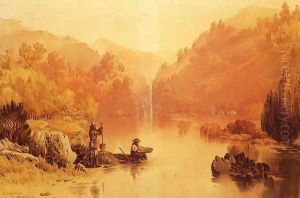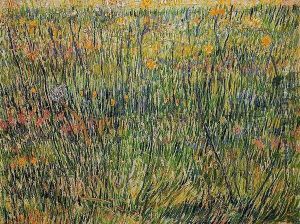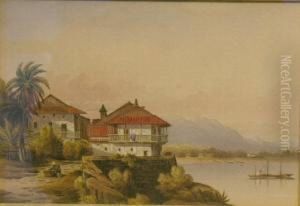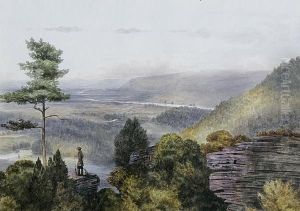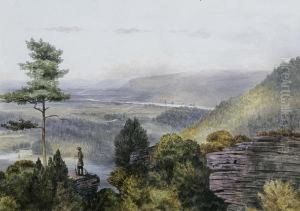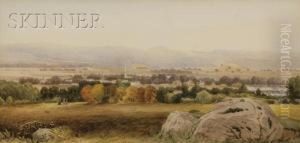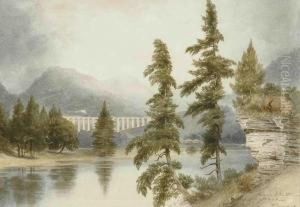William McIlvaine Paintings
William McIlvaine was an American artist born in 1813 in Bucks County, Pennsylvania. Although not as widely known as some of his contemporaries, McIlvaine made contributions to the American art scene of the 19th century, particularly through his landscape paintings and lithographs.
McIlvaine's early life is not extensively documented, but it is known that he had a keen interest in art from a young age. He pursued this interest despite the lack of formal art institutions in America at the time. His artistic career began in earnest in the 1830s, when he started producing lithographs. He worked for a time with Cephas Grier Childs, a prominent Philadelphia lithographer, which helped him to refine his technique and make connections within the art community.
During the 1840s, McIlvaine shifted his focus to landscape painting, which was becoming increasingly popular in America. His work during this period was influenced by the Hudson River School, a group of artists known for their romantic portrayal of the American landscape. McIlvaine's landscapes captured the beauty and vastness of the American wilderness, reflecting the nation's growing sense of identity and the notion of Manifest Destiny.
McIlvaine's career was also marked by his service in the Mexican-American War from 1846 to 1848, where he served as a captain. His experiences in the war influenced his art, as he produced sketches and paintings that depicted scenes from the conflict. These works provided a unique visual account of the war and contributed to McIlvaine's reputation.
Unfortunately, William McIlvaine's career was cut short by his untimely death in 1867. Though his body of work is not as extensive as some of his peers, his contributions to American lithography and landscape painting remain noteworthy. His works are collected in various institutions and continue to be studied by those interested in the art of the United States during the mid-19th century.
